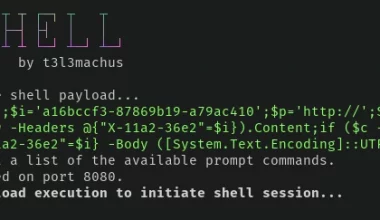In the ever-evolving landscape of cybersecurity, threats emerge and evolve as quickly as the defenders can adapt. One such recent development that has sent shock waves through the cybersecurity community is the emergence of the new Super-Bear Trojan. This insidious malware has been deployed in a highly targeted phishing attack against South Korean activists, raising concerns about the sophistication and motivations of cybercriminals. In this comprehensive blog, we’ll delve deep into this alarming cybersecurity incident, exploring the intricacies of the Super-Bear Trojan, its implications, and the broader context of cyber threats.
Understanding the Super-Bear Trojan
The Genesis of Super-Bear
The Super-Bear Trojan, although new to many, is believed to have originated from a highly sophisticated hacking group with suspected ties to nation-state actors. This group has garnered notoriety for its relentless pursuit of cyber-espionage goals and its ability to stay one step ahead of cybersecurity experts.
Targeted Phishing: The Entry Point
The attack involving the Super-Bear Trojan began with a meticulously crafted phishing campaign. The primary targets of this campaign were South Korean activists who have been vocal advocates for a wide range of social and political causes. These phishing emails were cunningly designed to appear as legitimate communications, effectively luring recipients into clicking on malicious links or downloading seemingly harmless attachments.
Trojan Unleashed
Once the unsuspecting activists interacted with the malicious content, the Super-Bear Trojan was unleashed onto their devices. This Trojan, like its namesake, is a formidable adversary. It is a multifaceted piece of malware capable of infiltrating and compromising various aspects of a victim’s digital life.
The Super-Bear Trojan’s Arsenal
Information Gathering
One of the Trojan’s primary functions is to gather extensive information about the infected device and its user. This includes capturing keystrokes, logging browsing history, and even siphoning off sensitive documents stored on the device. The depth of information it collects is staggering, making it a potent tool for cybercriminals seeking intelligence or leverage.
Remote Access
Super-Bear provides remote access to the attacker, effectively handing over control of the infected device. This level of access can lead to further attacks, including data theft, surveillance, or even the use of the compromised device as a launching point for larger-scale attacks.
Persistence
The Super-Bear Trojan is designed to remain hidden and persistent on the infected device. It employs various techniques to avoid detection and removal, making it a formidable and elusive adversary.
The Motivation Behind the Attack
Political Espionage
The choice of South Korean activists as targets suggests a political motive behind the attack. The attackers may be seeking to gather valuable intelligence or disrupt the activities of these individuals or organizations. The victims’ activism and advocacy efforts make them prime targets for those with a vested interest in silencing dissent or gaining a strategic advantage.

Geopolitical Tensions
This incident also serves as a stark reminder of the ongoing geopolitical tensions that often spill over into cyberspace. South Korea, situated in a region with complex geopolitical dynamics, finds itself at the intersection of various interests and threats. Nation-state-sponsored cyberattacks are becoming increasingly common, and the Super-Bear Trojan is just one example of the evolving tactics employed in this digital battleground.
The Cybersecurity Response
Rapid Detection
The cybersecurity community, once alerted to this new threat, mobilized swiftly to detect and mitigate the Super-Bear Trojan. Security firms, government agencies, and independent researchers have been collaborating to analyze the malware’s code, identify its command and control infrastructure, and develop countermeasures to neutralize its impact.
User Education
One of the most effective ways to combat phishing attacks, like the one that facilitated the Super-Bear Trojan’s entry, is through user education. South Korean authorities and cybersecurity experts are working diligently to raise awareness about the dangers of phishing and the importance of verifying the authenticity of emails and attachments. Educating the public on recognizing and reporting suspicious activity is key to preventing future attacks.
Conclusion
The emergence of the Super-Bear Trojan in a targeted phishing attack on South Korean activists serves as a stark reminder of the ever-present and evolving nature of cybersecurity threats. As technology advances, so too do the capabilities of malicious actors, and the consequences of these attacks can be severe. Vigilance, education, and cooperation among individuals, organizations, and governments are essential to thwart such attacks and protect our digital world.








3 comments
Wow, marvelous blog structure! How long have you ever been blogging
for? you made running a blog glance easy. The entire glance of your web site is magnificent, as smartly as the content!
You can see similar here sklep online